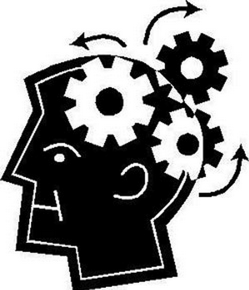Mental Health | About dementia with Lewy bodies

 Mental Health Update | Most experts estimate that dementia with Lewy bodies is the third most common cause of dementia after Alzheimer's disease and vascular dementia, accounting for 10 to 25 percent of cases.
Mental Health Update | Most experts estimate that dementia with Lewy bodies is the third most common cause of dementia after Alzheimer's disease and vascular dementia, accounting for 10 to 25 percent of cases.
The hallmark brain abnormalities linked to DLB are named after Frederich H. Lewy, M.D., the neurologist who discovered them while working in Dr. Alois Alzheimer's laboratory during the early 1900s. Alpha-synuclein protein, the chief component of Lewy bodies, is found widely in the brain, but its normal function isn't yet known.
Lewy bodies are also found in other brain disorders, including Alzheimer's disease and Parkinson's disease dementia. Many people with Parkinson's eventually develop problems with thinking and reasoning, and many people with DLB experience movement symptoms, such as hunched posture, rigid muscles, a shuffling walk and trouble initiating movement.
This overlap in symptoms and other evidence suggest that DLB, Parkinson's disease and Parkinson's disease dementia may be linked to the same underlying abnormalities in how the brain processes the protein alpha-synuclein. Many people with both DLB and Parkinson's dementia also have plaques and tangles — hallmark brain changes linked to Alzheimer's disease.
- Differential Diagnosis of Dementia with Lewy Bodies
The pattern of cognitive decline in dementia with Lewy bodies (DLB) can be similar to Alzheimer’s disease, involving memory impairment, poor judgment and confusion.
- Apathy may be more prominent in DLB than in Alzheimer’s.
Severity of cognitive symptoms and alertness may fluctuate from day to day. Patients may experience excessive daytime sleepiness.
Other common symptoms include non-threatening visual hallucinations and such Parkinsonian symptoms as “mask-like" face, rigidity, stiffness, shuffling gait and problems with balance.
About 50 percent of DLB patients experience rapid eye movement (REM) sleep behavior disorder. In this disorder, the normal suppression of voluntary muscle movement during REM sleep fails to occur, leading to vivid and sometimes violent acting out of dreams. REM sleep disorder in a person with dementia may be diagnostic for DLB.
- Treatment
No drugs are currently approved for treatment of DLB by the FDA.
DLB may be the most responsive of any dementia to treatment with cholinesterase inhibitors, but they are not approved for this purpose.
Parkinsonian symptoms may be treated with drugs for Parkinson's disease.
Treatment with antipsychotic drugs may lead to worsening of both cognitive and Parkinsonian symptoms.
- Pathology
Lewy bodies, which characterize this pathology, are abnormal deposits that consist largely of a protein called alpha-synuclein. Lewy bodies occur inside brain cells across a spectrum of other neurodegenerative disorders, including Parkinson's disease and some cases of Alzheimer's. The spectrum of disorders involving Lewy bodies is sometimes referred to as "synucleinopathies."


